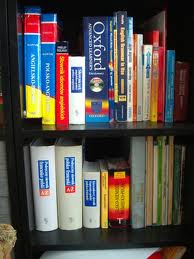
In this post, I want to concentrate on the reference material, more specifically, the terminology databases. These termbases, allow you to enhance the consistency of a translation to 100%. Suppose we have a 50,000 word medical project with a deadline of one week. In this project, three translators and three editors (i.e., six people total) will work as a team on the project. A termbase will allow the team to unify terms among so many people, so “medical condition” will not be translated as “enfermedad”, “afección”, “problema de salud” and “condición médica” (the worst), but to respect the term entered in the database (for these purposes, let’s say it is “afección”). “Prescription drugs” will not be translated in three different ways (“medicamentos recetados”, “medicamentos con receta” and “medicamentos bajo receta médica”), but it will have a single translation (entered in the termbase, of course). And this is how it works with all terms in the project that have two or more possible translations.
With this in mind, customers should provide glossaries, if they have one available, for the translator(s) and editor(s) to do a job with better consistency and quality. Needless to say, all of this is for the benefit of the customer!
(Spanish version: https://www.trustedtranslations.com/la-importancia-de-las-bases-terminologicas-y-glosarios-2010-10-18.html)
